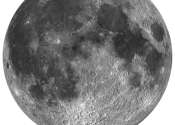Was the moon magnetized by impact plasmas?
The moon, Mercury and many meteorite parent bodies contain a magnetized crust, which is commonly credited to an ancient core dynamo. A longstanding alternative hypothesis suggests the amplification of the interplanetary magnetic ...








